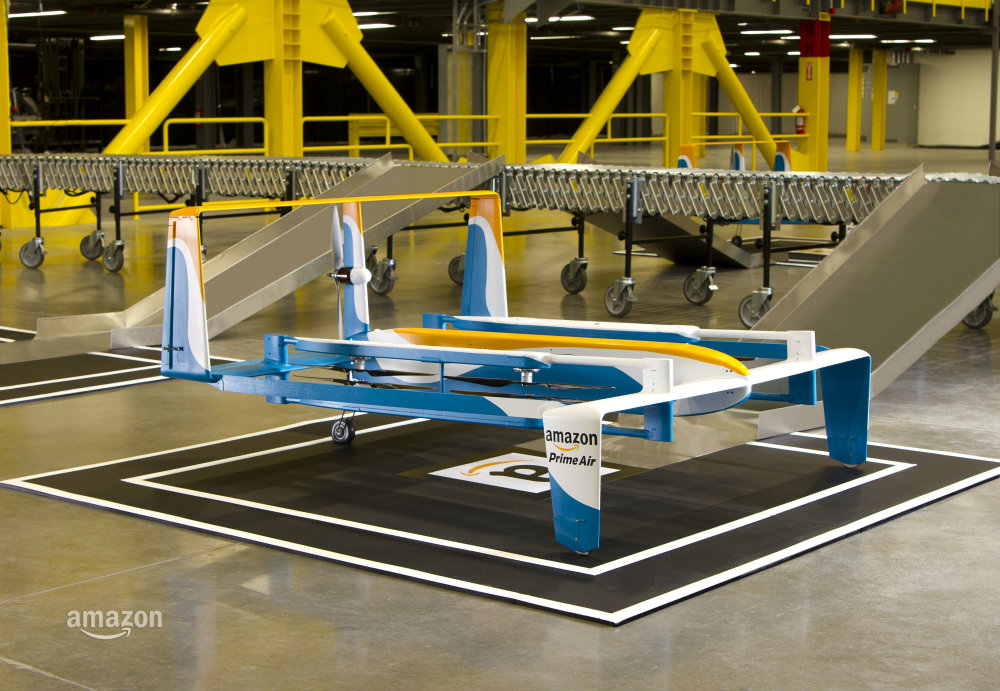Key takeaways:
• Two Amazon Prime Air drones struck a construction crane in Tolleson, Arizona.
• The crash caused damage and a small fire but no injuries.
• Local services paused while FAA and NTSB opened investigations.
• The incident highlights urban drone challenges and may prompt new rules.
What Happened in the Drone Collision
In late September, two Amazon Prime Air drones flew near a busy Phoenix suburb. Suddenly, they collided with a tall construction crane. The drones spun out of control and fell to the ground. Thankfully, no one on the ground or in nearby homes got hurt. However, the crash sparked a small fire in the dirt below. Fire crews arrived quickly and put out the flames. Meanwhile, residents watched as police closed off nearby streets. In addition, local delivery services paused until the scene became safe. As a result, some Amazon customers saw delayed packages. Yet, the company assured people that it would sort out delays soon. Moreover, engineers gathered parts from the crash site. They aimed to learn exactly how the drones hit the crane.
Why the Drone Collision Matters
This drone collision shows how tricky urban skies can be. As people build taller structures, drones must navigate more obstacles. Furthermore, drone flights often mix with manned aircraft and power lines. Therefore, safety risks rise when so many things share the air. Regulators face a big task as drone use grows across cities. In fact, many companies now test delivery drones in suburban areas. Yet, they must balance speed and safety. Consequently, crashes like this one raise public worries. Residents may urge tighter rules on drone corridors and flight speeds. At the same time, Amazon and other firms push for more freedom in skies. They argue that drones can cut delivery times and reduce road traffic. Even so, the public voice will shape future drone laws.
Challenges for Urban Drone Flights
Cities pose many challenges for drone pilots and machines. First, tall buildings and construction cranes block GPS signals. Next, wireless interference from cell towers can confuse drone sensors. In addition, gusty wind tunnels between skyscrapers can toss drones off course. Meanwhile, crowded airspace forces drones to share paths with helicopters and small planes. As a result, companies must install advanced collision-avoidance systems on every drone. However, these systems still face limits in real storms or heavy traffic. Moreover, operators need real-time data on flight corridors and no-fly zones. Without clear maps, drones may enter restricted airspace. Consequently, the FAA plans to launch a national drone traffic management program. Yet, building and testing that network will take years. In the short term, firms must rely on manual monitoring and human spotters. Even so, human watchers can miss fast-moving drones in complex city skies.
What Comes Next After the Drone Collision
After this drone collision, investigators sprang into action. The Federal Aviation Administration joined forces with the National Transportation Safety Board. Together, they will inspect flight logs and drone hardware. Investigators hope to find out if the drones obeyed speed and altitude rules. In addition, they will check if the crane operator saw any warning signals. Meanwhile, Amazon promises to cooperate fully with both agencies. The company wants to restore public confidence in its Prime Air service. Furthermore, Amazon says it will review its flight routes over cities. It may reroute drones farther from construction sites and tall buildings. Also, engineers plan to test new software updates that improve obstacle detection. These updates could include enhanced radar and camera systems. As a result, drones may spot cranes sooner and steer away safely.
In the coming months, regulators may propose stricter drone guidelines. For example, they could limit drone speeds in urban areas. They might also require backup safety systems on all commercial drones. In addition, local governments may set specific drone corridors over certain streets. Such rules would add protection for homes, schools, and hospitals. Although this drone collision caused no injuries, it offers a clear warning. As delivery drones become more common, safety must stay a top priority.
Frequently Asked Questions
How did the drones hit the crane?
Investigators suspect the drones lost their way and missed obstacle alerts. They will review flight data and remote pilot logs to find answers.
Were any people hurt in the crash?
No one on the ground or nearby got injured. The drones caused only minor damage and a small fire in an empty area.
Will Amazon stop drone deliveries after this incident?
Amazon plans to keep its Prime Air program running. However, it will pause flights near tall structures until safety checks finish.
Could new rules stop drone collisions?
Yes. Stricter safety standards, no-fly zones, and better traffic systems could reduce crashes. Regulators and companies are already working on those solutions.

